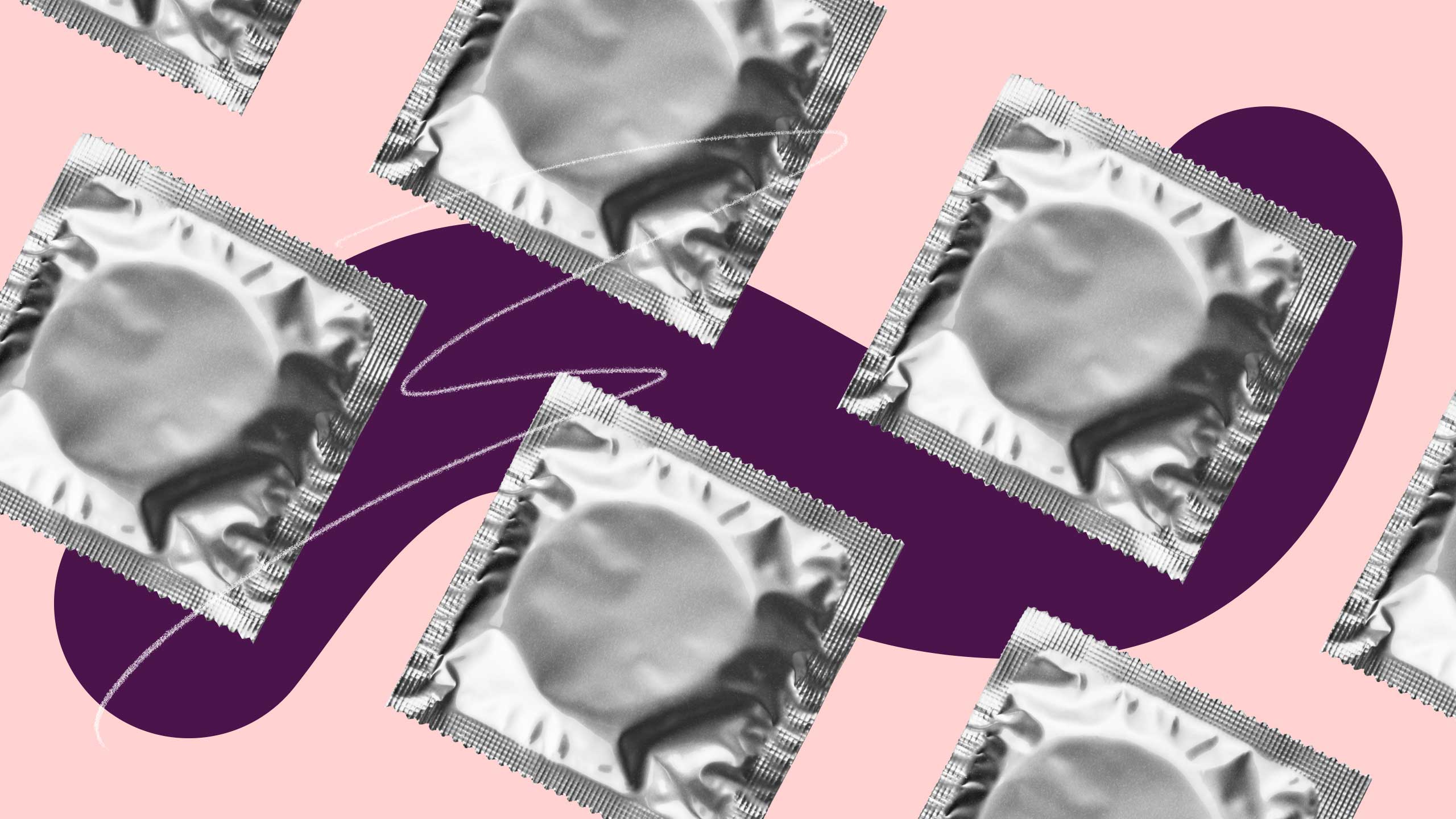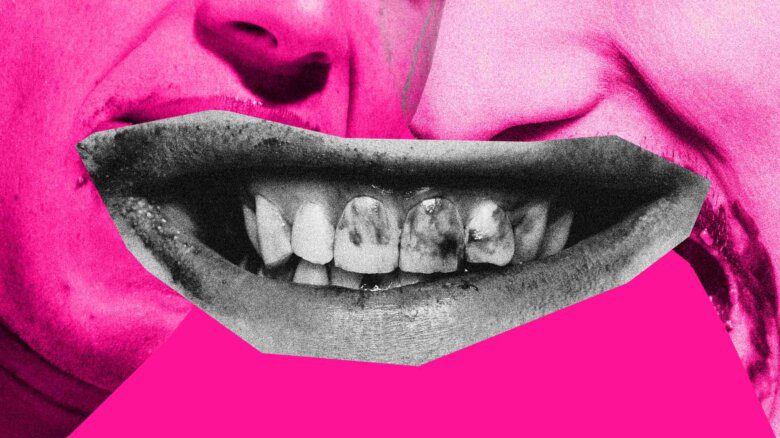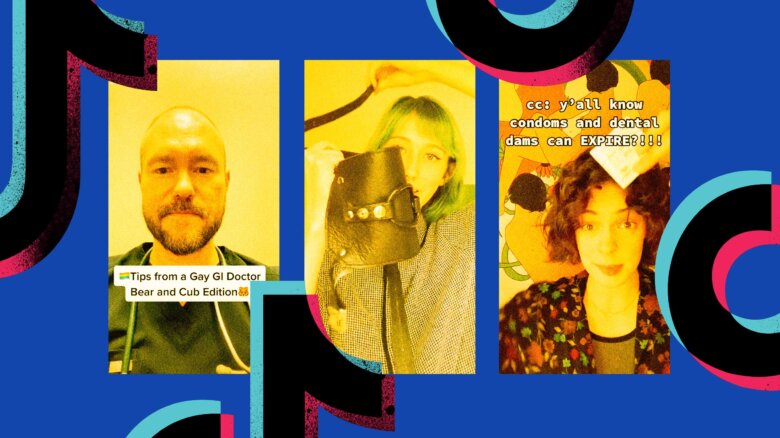The beginning of a new historical age is usually marked with an invention that initiates progress. The Industrial Age had the steam powered engine, the Great Space Race was propelled forward by rocket fuel and today, ten years after PrEP was approved by the United States Food and Drug Administration (FDA), we are living through a barebacking renaissance.
Unlike the actual Renaissance, we are not blind to this era’s significance. We have the historical clarity to know this period will be looked back on as a time when barebacking became safer—and therefore cooler, hotter, more fun and, actually, almost kind of mundane in its pervasiveness.
PrEP, or Pre-exposure prophylaxis, truly does deserve its reputation as an innovation that has changed the course of history, right up there with the Gutenberg printing press and tiny umbrellas for drinks. When taken correctly as a daily pill, PrEP reduces the risk of HIV by 99 percent. It has improved the sex lives of poz guys, curbed rates of infection and smashed HIV fears and stigma around gay sex. The understanding that U=U (undetectable equals untransmittable for poz folks who are managing their HIV with medication) has also contributed to a greater freedom to bareback for all. If you’re a gay man, the innovation of PrEP and discovery of U=U has probably improved your life more than the Canadian Space Agency’s Canadarm.
As a gay man in a long-term, open relationship who uses condoms with all my extra-curricular playmates, I have noticed a shift in how cis men view condom use as PrEP has become more popular. Condoms used to be default. Now, when I mention one to a hookup, either on Grindr or with my back on their bed, a noticeable cohort of playmates reacts like I am asking them to attach an iron lung to their dick (or my dick, depending on my mood).
This usually results in a mutual rejection based on our sexual preferences, or in some cases, a deeply dissatisfying in-person compromise. One time, when I hooked up with a hot guy of note, a performer from a certain gay television franchise, he didn’t want to wrap it up; so he fingered me for five minutes and then I went home.
My preference sometimes illicits heated debate, like when a guy on PrEP I met while staying on a bear resort in Florida scolded me for being overly-cautious about STIs and condom use—after we had already had sex with a condom.
Many times I have had unbelievable sexual chemistry with a guy in the lead-up to doing the deed, only to have it screech to a halt when I say I only “play safe.” It can be an off-putting and frustrating experience. Nothing kills the mood quite like discovering your sexual desirability is conditional on something that, in my view, doesn’t seem like a huge barrier to overcome. To me, condoms are a wonderful tool to achieve pleasure, the same way a sex toy is. I’m hot, young and in my prime: Am I really not worth wrapping it up for?
Bareback is raw and intensely intimate; more sought after by some because of its perceived closer physical connection and its ubiquity in porn as the ideal kind of uninhibited sex. Ultimately, using hookup apps can feel like sitting on a conveyor belt of endless options. If I won’t go bareback, someone else will. In those moments, it’s hard not to feel like a teen on prom night, unwilling to put out. Can’t they tell I’m not that kind of girl?
I’m not the only one taking note of declining condom use: it’s a trend researchers have been documenting over the last two decades, among gbMSM (gay and bisexual men who have sex with men) and among Canadians overall. For some, declining condom use is linked to PrEP. One 2017 study from Seattle, for example, surveyed gbMSM on PrEP about whether they used condoms. The proportion of respondents who reported never using a condom in the past 30 days rose from 10 percent at the start of their PrEP use to 24 percent at the nine month follow-up visit.
As rates of condom use have fallen, the prevalence of new STIs has gone up. A 2018 meta-analysis of eight studies that looked at the connection between PrEP use and STI diagnoses found that when gbMSM started taking PrEP, they were 1.24 times more likely to get an STI compared to before they started taking PrEP.
These stats might be less scary than they seem. Researchers are quick to point out that a PrEP prescription requires you to get tested for STIs every three month, so more people are getting tested regularly, one factor that can lead to higher recorded rates. We’re more likely to catch—and treat—STIs before they spread.
Still, doctors unfamiliar with PrEP may not follow the regular STI check up protocol to the letter. For example, some may fail to do a throat or anal swab when this is where an infection could be. If they’re missing these infections, the rate of STIs could actually be higher among gbMSM on PrEP than previous studies show.
So, sure, PrEP prevents HIV transmission—but have we forgotten about, I don’t know, every other STI there is? Am I the only one who finds getting an STI a huge annoyance? Because I’ve had gonorrhea twice—and I assure you it is.
Getting an STI can be unpleasant, but it’s worth noting, of course, that many of them are easily treatable, and getting treated for an STI is worth the price of admission for many gbMSM on PrEP to bareback. It should also be noted that condomless, penetrative sex is a risk my straight girlfriends take all the time with their partners without so much as batting an eyelash despite the fact that they could have a baby by accident.
While I’m all for the destigmatization of STIs, I hope we don’t lose sight of the importance of prevention. GbMSM are still the highest demographic of new HIV diagnosis in Canada, and any tool towards prevention is necessary. And let’s not forget the rise of drug resistant strains of infections, like the dreaded Super Gonorrhea. (Hello, Marvel Studios? Have I got a pitch for you)
“My dates will scour storage bins, closets, the back of drawers, until finally they blow dust off a stray condom like they’re exhuming an ancient talisman.”
If my asking to use a condom doesn’t stop a hookup in its tracks, the request usually prompts my sexual partners to react one of three ways. The first is as though I’ve just asked if they have a VCR I can borrow: “Oh really? That ol’ thing?” They scratch their heads, trying to remember a long forgotten past when they used to have condoms on hand. “Yeah, I’m sure I have one around here somewhere.”
This usually results in them scouring storage bins, closets, the back of drawers, until finally they blow dust off a stray single condom like they’re exhuming an ancient talisman. A talisman with an expiration date we both hope has not long passed.
The second kind of reaction is the most aggravating: men assume a look that says, “Oh, a condom, of course! Yes!! I was just going to ask!!!” But I can tell by their all-too-late, forced compliance that they were more than ready to bareback with me before confirming I was cool with it. These must be the same guys that ask for directions to a restaurant when Google Maps has existed for over a decade. Must I do everything?
The third reaction is we use a condom and it’s great. We have a hot, mutual respect for boundaries. As a somewhat anxious person, condoms counteract some of the “what ifs?” of sex, which can lead me to deeper pleasure and satisfaction. Personally, condoms allow me to hook up with strangers and friends with benefits alike with reckless abandon. I can go from the arms of what’s-his-name to the arms of my lover with far less hand-wringing. I’m not saying bareback sex can’t be intimate and loving—I’m saying personally, I ride my bike with greater joy when I wear my helmet. I’m a virgo moon: consent is sexy, and safety is even sexier.
Thinking back, my love of condoms started early. The pause to find and put on a condom is something I still remember form the very first time I had gay sex, at a time when it was unfathomable that a boy wanted to have sex with me. Even passing them around in high school health class was titillating. Since then I’ve always associated condoms with a youthful and naughty kind of promiscuity; condoms have a confident energy that says, “I’m a sexual being, dammit.’’ Using one tells me that my sexual partner is thoughtful and caring, even when they are throwing me up against a wall. They create a boundary for intimacy to flourish.
l realize I am part of a somewhat rare and annoying pool of people who have a long-term partner but also hook up with others outside my relationship. Thankfully, I consider being annoying an important part of my personality. A lot of my condom use is because I have a responsibility to my partner’s safety, not just my own. I am not on PrEP (yet) but even if I were, I’d still feel compelled to reach for a condom whenever I hooked up with someone outside my relationship.
In decades past, condoms used to be more culturally hot, cool—like a sexy form of prop work. Rolling on a condom is romantic, right on the precipice between foreplay to penetration, an intermission filled with sexual anticipation. A tiny burlesque performance where you’re putting something sexy on rather than taking it off. When did that become a sexual impediment?
I think things only get better for everyone if we prioritize bringing back the cultural coolness of the condom. During the AIDS crisis, queers had to make using condoms popular. Keith Haring painted condoms in his wild, linear murals. Bowls of condoms became ubiquitous in nightclubs, bars and burger joints in every gay village; now I see them less, if at all. In the office of the sexual health clinic where I get tested, there’s a pro-condom poster from the ’80s featuring a black and white photo of a man pulling off the silk boxers of his lover. This soft focused photo is sensual, loving and erotic—everything I want condoms to be again. Let’s eroticize that moment of pause when your partner grabs a condom as you patiently wait, your ankles by your ears. Laying there splayed, know that I salute you. In this Neo-Condom renaissance, I am your Medici—sponsoring and encouraging promiscuity, sensuality and the power of a thin layer of latex.


 Why you can trust Xtra
Why you can trust Xtra
